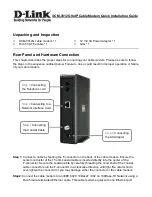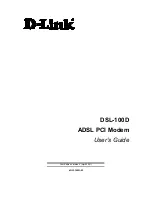
109
6.0 V.25 bis Autodialer
•
DIC — Disregard Incoming Call.
The DIC command instructs the
autodialer not to answer an incoming call. The DIC command is
cancelled when the CIC command is issued or auto-answer is enabled
from the front panel.
• PRN — Program Normal (Store Number)
(Syntax: PRN<|>1;<|>5551212).
The PRN command is used to store
a number or dial string in a memory address location (cell) so it can
be dialed later by specifying only the address. As shown above, PRN is
followed by the memory location, a semicolon, and the phone number
to be stored. After a number is stored, it can be dialed using the CRS
command. You can store any of the characters listed in Table 6-2.
Ten memory cells (0-9) are available for phone number storage. Each
cell can hold a maximum of 25 characters, although cells 1 through 9
automatically expand to the next empty cell if loaded with more than 25
digits. Even if a stored number is continued to another cell, the maximum
number of characters that can be stored is 36. You cannot store a number
in a cell unless it is empty. To clear a cell, enter PRN and the address,
without a number. Only cell 0 can be accessed from the modem’s front
panel (via the PHONE LCD screen).
•
RLN -— Request Stored Number(s).
RLN is used to request a list of
all stored numbers or to show the number stored in a specific memory
address. RLN, used alone, requests a list of all stored numbers.
The DTE display shows the stored numbers as follows:
LSN 0;
301 555 1234
LSN 1;
301 123 4567
LSN 2;
301 555 5555
(and so on through memory address 9)
If a memory address is specified after RLN, e.g., RLN 5, the DTE display
shows only the number stored at the specified address.
















































